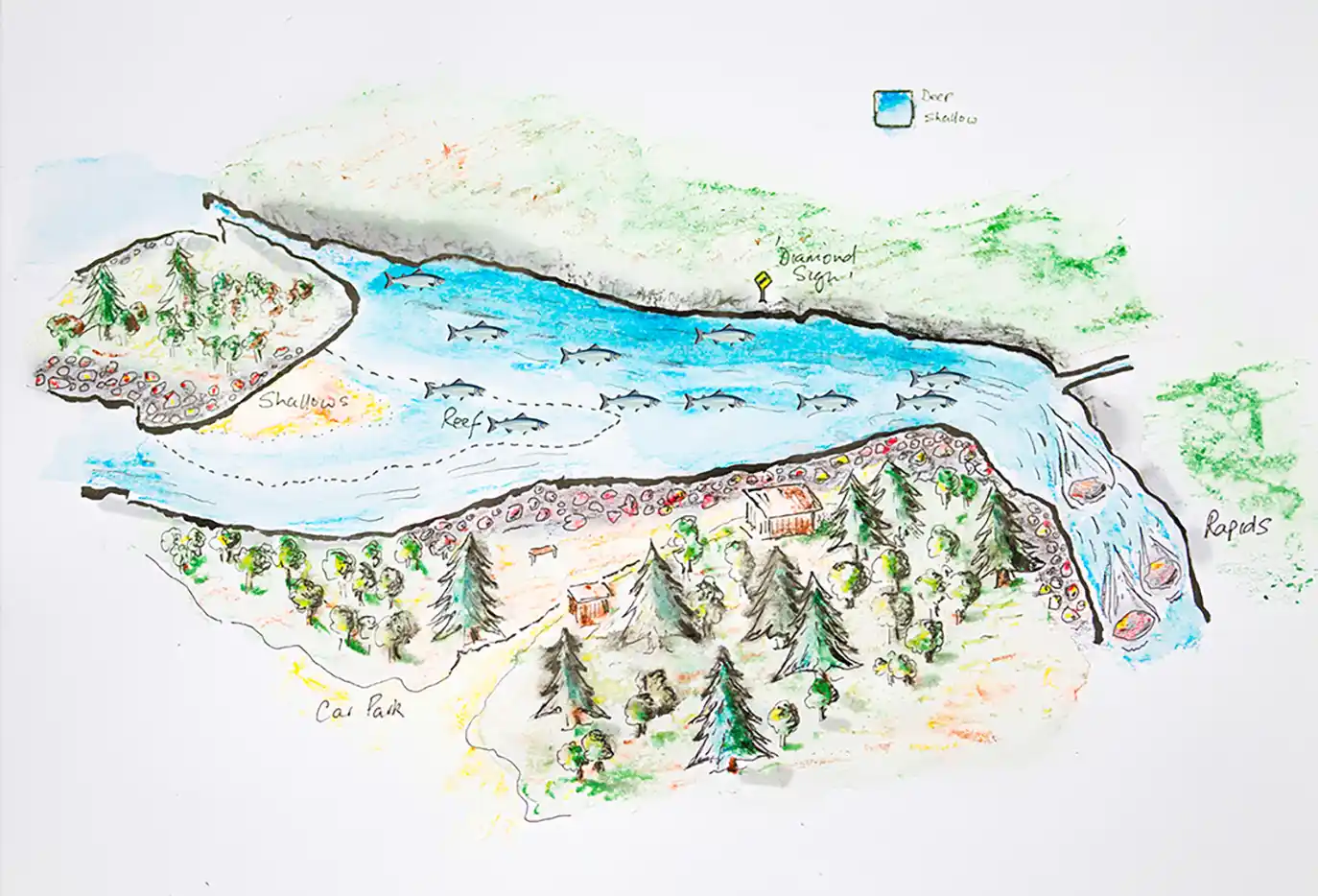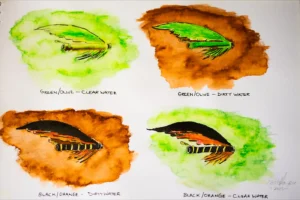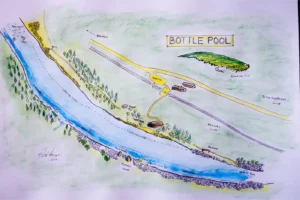The Taking Strip
The taking strip is that magical part of the fly swing where the fly is fishing beautifully and at its most appealing to a salmon. Rarely, except in ideal water conditions, does the fly swing perfectly from bank to bank. In most cases, where the fastest water is on the outside, the fly starts off super fast and slows down during the swing. The reverse can also be true if the fastest water is on the inside. Its not the salmon won’t take the fly if it is not fishing and presenting properly, their degree of tolerance varies according to the conditions and how long they have been in the river but when the conditions are ‘iffy’, a poorly presented fly won’t get a second look. The principle is that for part of the fly swing, the fly will fish at its best and it is this area that is known as the ‘taking strip‘ because put simply, it is the part of the river in which you are most likely to get a take. Moreover, it is this area of the river that you must aim to concentrate your efforts on, fishing the fly as well as you can in the ‘taking strip.’
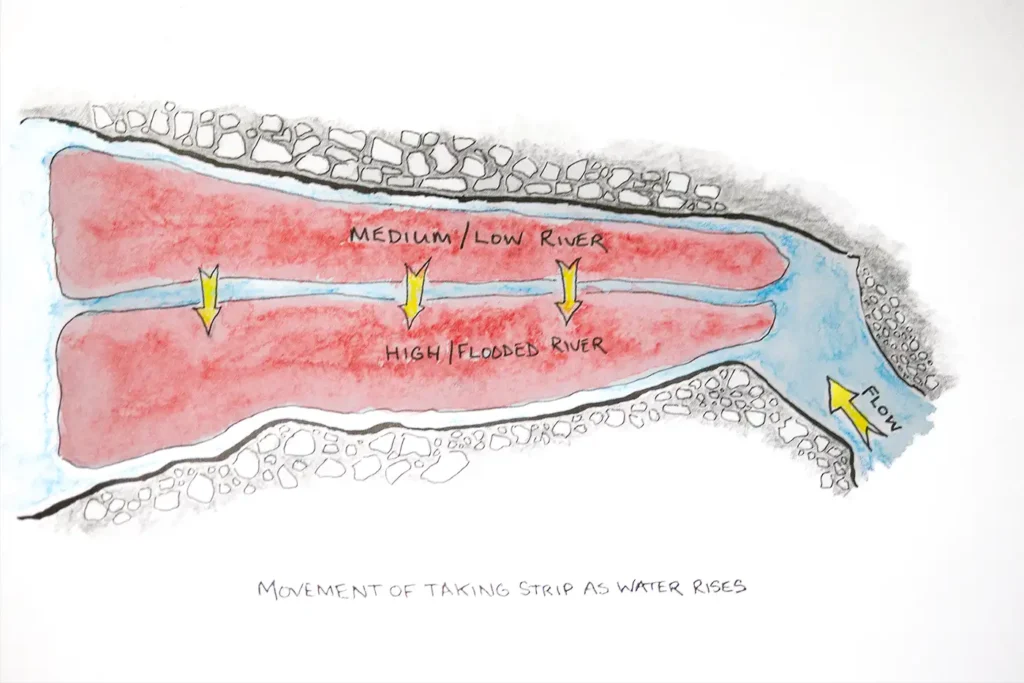
In this example, with the fastest water racing down the far side of the pool, the taking strip will shift in toward the near bank when the water rises.
How to attack the Taking Strip
If we accept that there is a sweet part of the drift where the fly will fish ‘just right’ its our job to set the cast up properly. It starts with your kit – do you use a fast sinking line or a floating to intermediate? The answer is not as obvious as you might think. Most people assume that the further out they fish, the deeper the sink rate of line they should use. It all depends on what you are trying to achieve. Most folks also assume that faster water means that a sinking line will perform better by cutting below the surface flow and avoiding the turbulence. This too is true. However, more often than not, in a big flood, the fish are often very close to the bank in shallow, more gently flwoing water. In this example, there is no point in fishing a fast sinking line because it will be swept out of the fast water, setting the fly off too quickly to catch fish and as it approaches the sweet spot, it gets stuck on the bottom!
Salmon do not go down to flies, they rise to them and whilst sinking lines have a multitude of uses in salmon fishing, they are not a panacea. In the big flood example I invariably use an intermediate or slow sinking line because I want to fish the shallow water on the inside of the swing well. I also want my fly to be high in the water, in the best place for the fish to see it in the coloured water.
Other factors come into play too, such as the casting angle. A long cast at 45 degrees will slow the fly down throughout the swing and prevent it from setting off too quickly. Conversely, a squarer cast will speed the fly up and show more of the flank of the fly to the salmon. Altering the angle of the cast to slow the fly down or speed it up so that it fishes perfectly in the taking strip is key.

In low water, fish are often concentrated in small areas of the pool where the flow is strongest. The taking strip disappears and the pool is confined to a few casts in a series of potentail hot spots.
Don't be a Hero
You might be tempted to think that you need to cast further as the river rises but this is not the case. Since more often than not, the fish are under your feet, blasting the fly to the other side of the river can actually damage your chances of hooking up. The further you cast, the faster the fly will swing and if you set it off too quickly, it won’t be drifting at the right speed in the ‘hot zone.’ The irony is that as the river shrinks, longer casting is necessary to reach the small pockets of the fastest moving water.
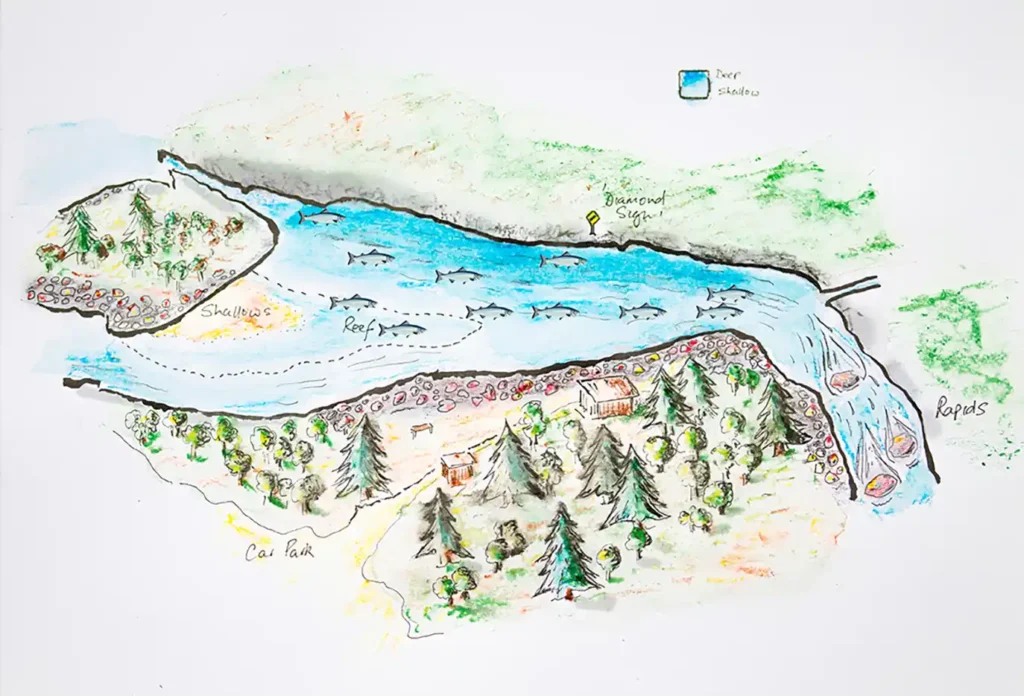
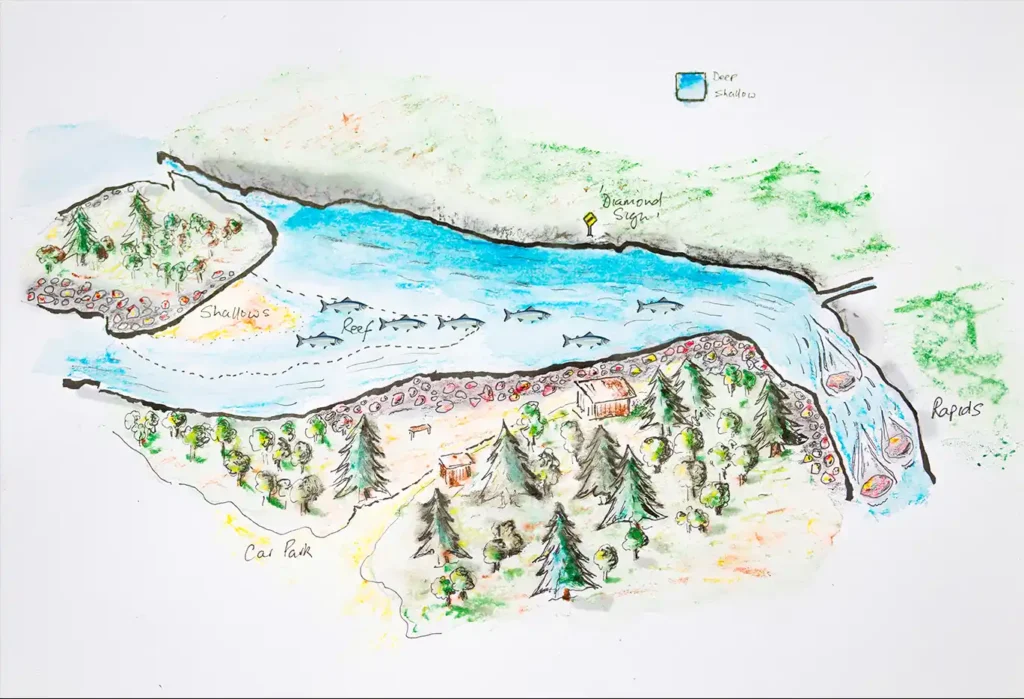
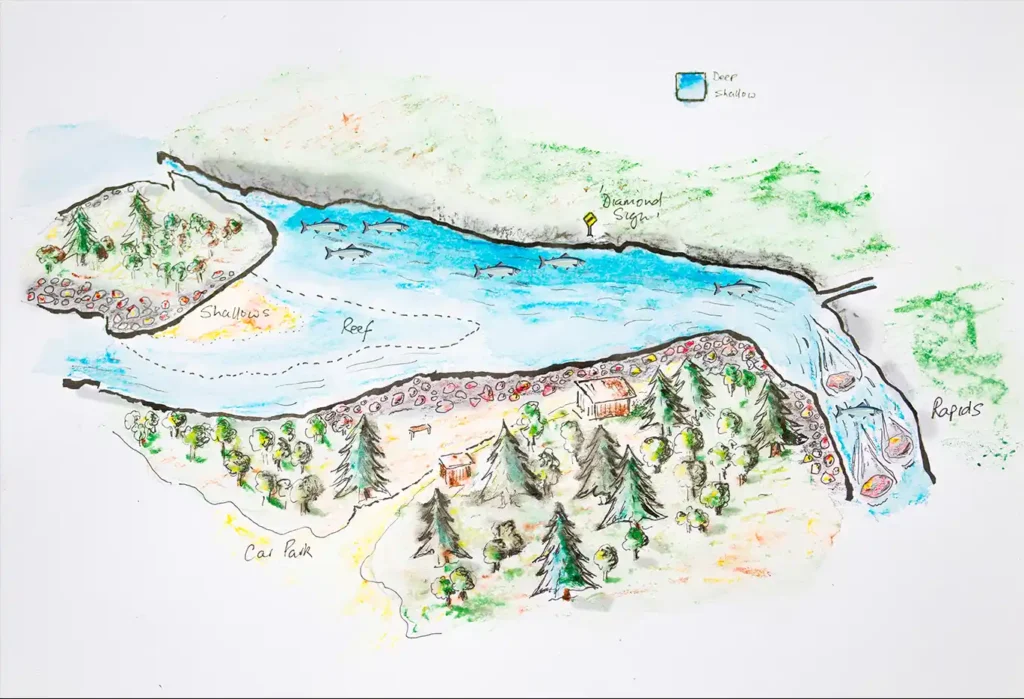
Salmon shift positions in Rhythm with the Rise and Fall of the water. Above are the medium, high and low water positions of the salmon.
Water Clarity
During a flood, water clarity decreases dramatically but some pools, especially those with a sharp bend, will provide better conditions in the quieter water. In this situation the fast water is pushed to the outside of the bend. It is turbulent, coloured and may well be choked with branches and leaves. The water on the inside is moving more gently, contains less suspended silt and detritus and is more comfortable for the salmon and particularly less irritating to its gills. The water where the fish lie is most likely to be the cleanest and you should choose a fly that looks good in the less tinted water and may look poor out in the main flow.
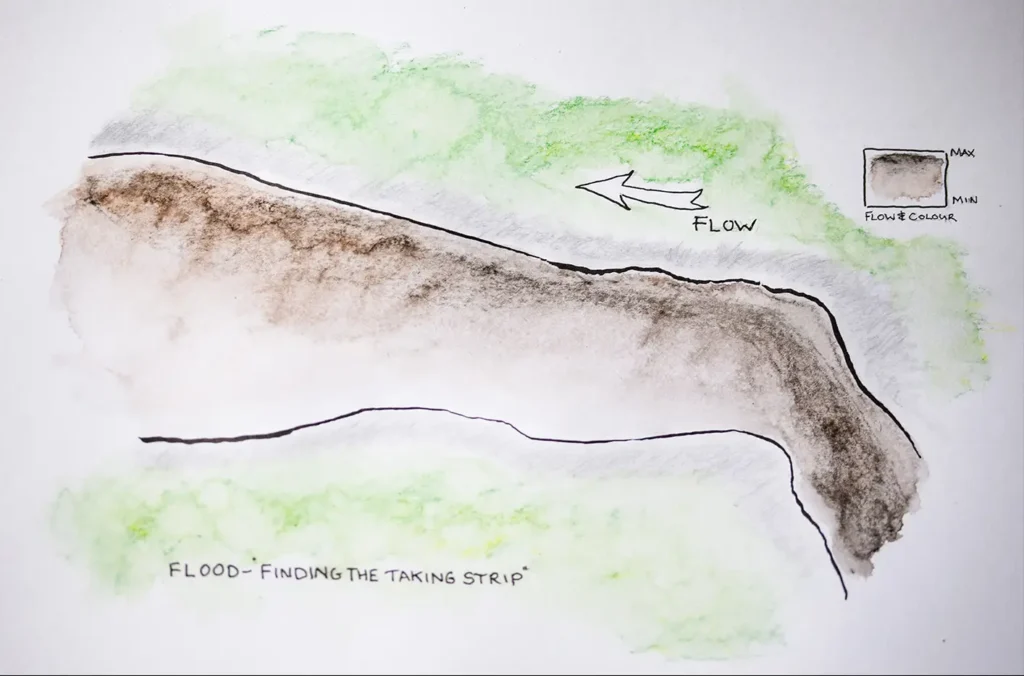
During a flood, the most coloured and debris littered water is pushed to the outside of the bend. The water on the inside contains less suspended siltand is cleaner.

In coloured water, high contrast flies work much better than dull flies. More flash and ‘bling’ can be included, the colours sharper and brighter…
Setting up your cast and general approach to fish the ‘taking strip‘ well is common sense but it might demand that you might need to switch fly lines, use a weighted fly or fly of a different size and colour to appeal to the fish. Most importantly, the decisions about the kit should be heavily biased toward fishing the fly well in the zone where fish are most likely to take. Look for water moving at the right pace, in the right depth and gear up accordingly. Fish will, of course, get caught outside the taking strip. Inevitably, they will inhabit areas outside but in these places the water might be moving too slowly or quickly for the fly to fool the fish.
